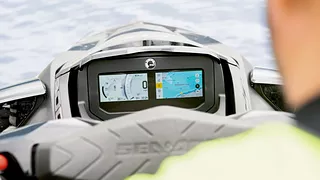- Tips
Some of the most common issues that PWC owners face - all in one place

As exciting and fun as riding a PWC is, it can be just as frustrating when you can’t ride it. And no, we don’t mean unfavorable weather conditions here, but technical problems. However, weather (un)opportunities are easy to recognize - just by looking at the sky or water, while these technical ones are much more hidden. This can be especially demanding for someone who just bought a PWC and may not be familiar with its malfunctions. But, if you want to avoid these problems at all costs, the safest solution is to rent a jet ski. You can do it easily through the platform for booking outdoor activities - 365.tours. However, if you want to own your own jet ski you don’t have to worry - it doesn’t break down any more than other motor vehicles. But, in order to make it as easy as possible for you, we present you some of the most common problems associated with it.
Starting problem
One of the most common reasons a PWC won’t start is a faulty relay - an electrical device that controls the current that passes through the jet ski. Its main function is to switch current from one circuit to another, usually to start the engine, control lights, and other electrical components. Therefore, be sure that relay on your jet ski is valid so that PWC can function properly.

Problems with the steering wheel
Now and again issues with the controlling wheel can happen because of a few of the most well-known reasons:
Collision or hitting something in the water
This can cause damage to the steering system, which is a problem. Any damage must be repaired immediately so that problems and risky situations do not arise during the next drive.
Damaged cables
Cables are always a sensitive component of any device/vehicle, and it is the same with a PWC. If the jet ski is ridden a lot, cables can get worn over time, so it’s important to inspect them regularly and replace them at the first sign of damage.
Problems with control levers
The control levers can become stuck or broken, which ultimately can cause problems and even the complete inability to control the PWC. In order to avoid these situations, it is extremely important to regularly lubricate the levers to protect them from all external factors that can lead to their damage.

Overheat
During every ride, PWCs are exposed to extreme conditions - from high speeds and intensive use of the engine to frequent exposure to strong sunlight. So, PWC sometimes may overheat as a result of this combination which can lead to engine damage and other issues.
Here are some of the most typical causes why PWC overheating:
Blockage of water flow - PWC uses water to cool the engine, so it is extremely important that the water can pass through the cooling system unhindered. If, at any time, comes to a blockage in the system, it can lead to overheating and further problems. For this reason, it is necessary to react to every slightest sign of clogging, and in addition to regularly check the cooling system.
High temperatures - if a jet ski is ridden during extremely hot weather, it can affect the temperature of it. In order to prevent it from overheating, it is necessary to reduce or adjust the riding speed or even stop completely to allow the engine to cool down.
Overcrowding - the PWC has a limited cargo capacity that must be respected. In any case, be sure that you don’t carry too much weight or too many passengers.
Defective thermostat - a correct thermostat helps regulate the engine temperature and ensures that it does not overheat. Be sure that the thermostat is working properly.
Damaged or clogged exhaust system - this can also cause jet ski to overheat. But, this problem can be recognized pretty easily - by the unusual sounds that PWC emits or by the bad smell that remains behind it.

Problems with batteries
Batteries used on PWCs have a limited lifespan, which can be shortened if you are not properly taking care of them. Some of the most common problems with PWC batteries include:
- Improper storage - batteries should always be stored in a dry and cool place. This means that the place where the batteries are located must be as far as possible from any heat suede (for example, sunlight) as well as from moisture (for example, in basements).
- Long-standing - if the batteries are not used for a long time (for example, during the winter period), this can easily lead to corrosion or reduction of their working capacity.
Sucking up the objects into pwc
You can often hear the experiences of jet ski owners who encountered this very problem. Given the characteristics of a PWC, it is not unusual for it to pick up objects under its own power, but still, in order to save time and money on repairs, there are ways to minimize the risk of objects being sucked in.
- PWC should be driven in deep water. That way, it is automatically prevented from sucking up sand or other objects that are on the seabed.
- It is especially important to avoid riding near beaches or other places with pebbles so that the system does not drag them.
- By regularly checking the PWC, i.e. its nozzle, it will help prevent the accumulation of dirt and all objects that do not belong there.
- Placing protective nets on the PWCs will prevent the suction of objects that could cause problems with the PWC.
Now that you are aware of these problems, you can greatly reduce them and even prevent some altogether by taking simple precautions. First and foremost is regular PWC servicing at an authorized service center, along with, of course, regular cleaning and checking of all vital parts. Also, before reaching the ride, check the condition of the PWC parts and whether they are ready for use. These security checks only take a few minutes, and they can save you from significant financial expenses - thanks to the prevention of major breakdowns and problems.
You may also like
Advantages of purchasing and servicing your jet ski from the same distributor

Jet ski modifications - boosting performance and style


